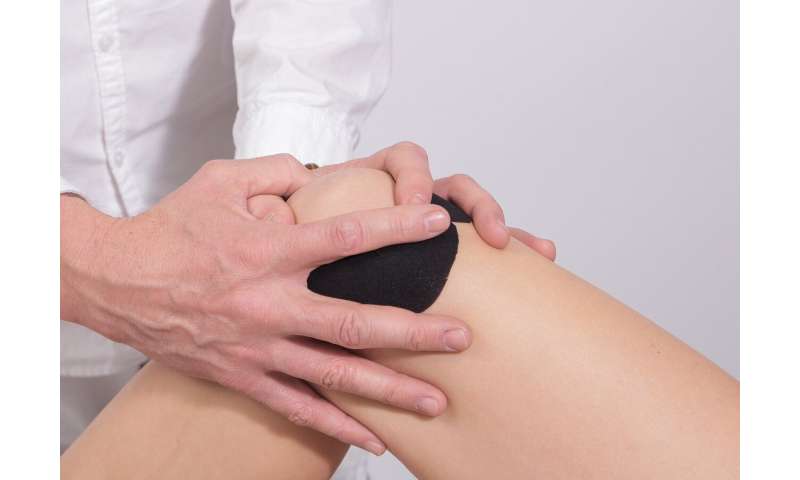
There were more than 300 million cases of hip and knee osteoarthritis worldwide in 2017—predominantly in high income countries—with the figures set to rise further, reveals an analysis of international modelling data, published online in the journal Annals of the Rheumatic Diseases.
Women are disproportionately affected by the condition, while associated disability has risen by nearly 10% since 1990, the data show.
The researchers drew on modelling data from the Global Burden of Diseases, Injuries and Risk Factors Study for 2017, carried out by the Institute of Health Metrics and Evaluation for 195 countries, to calculate the number of new and existing cases and disability attributable to knee and hip osteoarthritis.
Osteoarthritis in these two joints accounts for a large proportion of associated treatment and care costs.
The researchers wanted to explore in depth global, regional, and national trends, segmented by age, sex, and country income levels, and to assess how these might have changed since 1990, when Global Burden of Diseases data were first collected.
The analysis revealed that there were 303.1 million cases of hip and knee osteoarthritis, with an estimated prevalence, standardised by age, of 3754.2 per 100,000 people. This represents an increase of more than 9% on comparable figures for 1990.
There were also nearly 15 million new cases of knee and hip osteoarthritis worldwide in 2017, equal to a new case rate of 181, standardised by age, for every 100,000 people, representing an increase of more than 8% since 1990.
Global estimates indicated that nearly 9.6 million years were lived with disability in 2017. This represents a rate increase of more than 9.5% since 1990.
The numbers of older people with osteoarthritis rose in all regions of the world, with North America, Australasia, and tropical Latin America topping the regional league table.
Regionally, the numbers of existing cases were highest in North America, North Africa and the Middle East, and Australasia, with the lowest numbers in Sub-Saharan Africa.
The highest numbers of new cases were seen in North America, Australasia, and Asia Pacific, while the lowest numbers were seen in Eastern and Central Sub-Saharan Africa and East Asia.
Years of life lived with disability were highest in North America, Asia Pacific, and Australasia, and lowest in Sub-Saharan Africa.
At a country level, the US, American Samoa, and Kuwait had the highest number of existing cases in 2017, with Taiwan, North Korea, and Madagascar at the opposite end of the scale.
The pattern for new cases was also similar, except that Qatar replaced American Samoa.
The number of existing cases rose with age, peaking among 60-64 year olds, but there were more new cases among women in 2017, peaking among those aged 55-59.
The researchers acknowledge that the study findings relied on modelling data, so some caution is needed in interpreting them, and that they are limited to osteoarthritis of the knee and hip.
Nevertheless, they warn that osteoarthritis is “a major public health challenge,” which is set to grow as populations around the world age and the prevalence of obesity, a major risk factor for the condition, increases.
“Although there is variation between countries in prevalence, incidence, and [years lived with disability] due to [osteoarthritis], its burden is increasing in most countries, especially among women” write the researchers.”This trend is expected to continue as the ageing of the global population is rising.”
Source: Read Full Article
